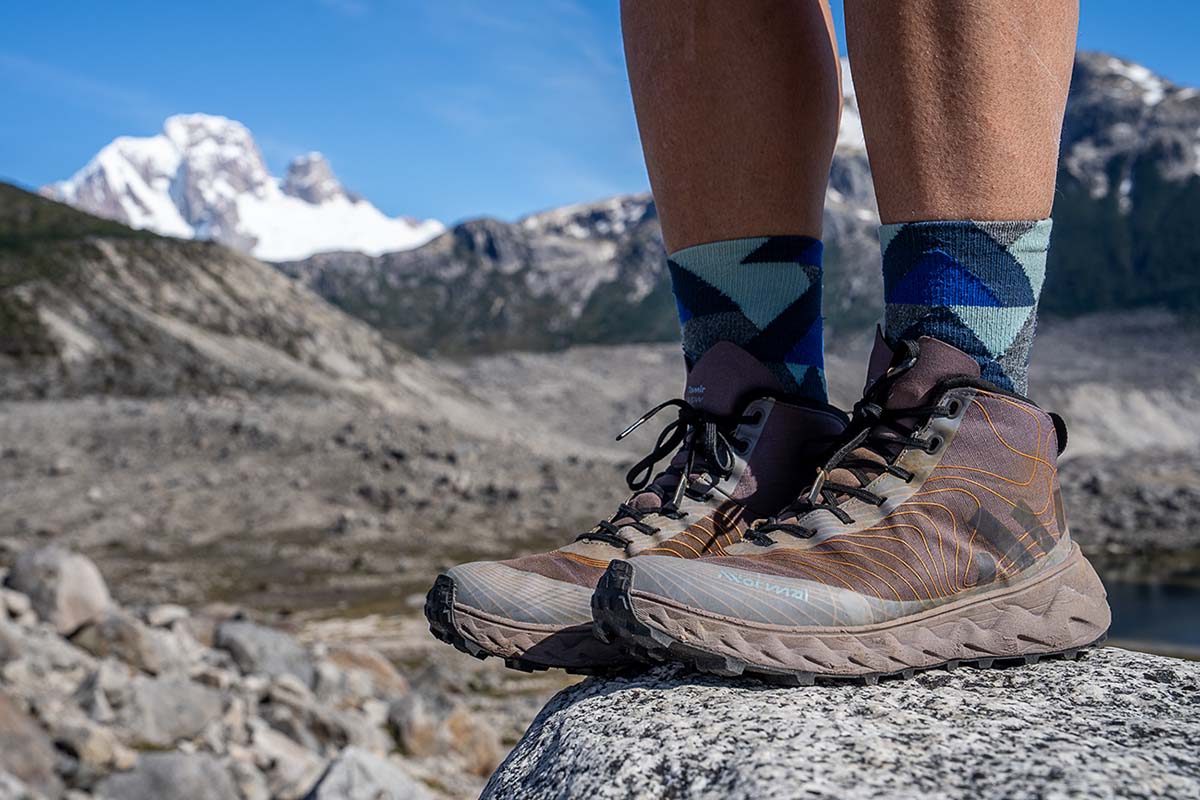
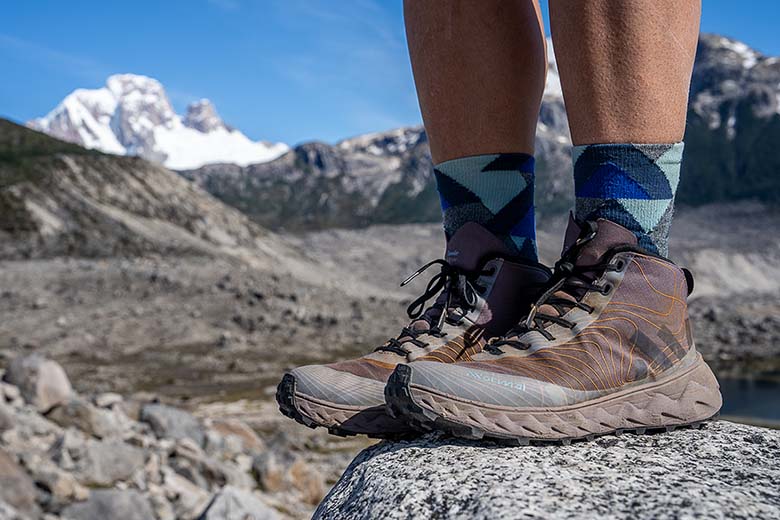
Price: $185
Weight: 1 lb. 5.4 oz. (women’s size 8.5)
Waterproof: Yes (Sympatex)
What we like: A remarkably light boot that punches well above its weight in durability, stability, and support.
What we don’t: Lacking in cushion and breathability; sizing runs big.
See the NNormal Tomir Waterproof
Co-founded by decorated mountain athlete Killian Jornet and Spanish shoemaking brand Camper, NNormal is taking a new—and exciting—approach to trail runners and hiking shoes. While minimalist, their designs are built to last and can be repaired and resoled to maximize their lifespan and minimize waste. We recently took their mid-height trail runner, the Tomir Waterproof Boot, to Patagonia for testing, where it was quick to impress. It’s not the most cushioned or breathable design but feels far less compromised than its weight would suggest. Below we outline our experiences with the Tomir Waterproof. To see how it stacks up to the competition, check out our articles on the best women’s hiking boots and best hiking boots.
NNormal specializes in trail running shoes, so it comes as no surprise that the Tomir Waterproof Boot has a noticeably flexible and streamlined feel. Out of the box, I was able to hit the trail without breaking in the shoes and experienced zero pressure points, hot spots, or blisters. That said, the boots aren’t as cushioned as they look—at one point, I stepped on a patch of sharp brush and worried that the branches would poke through the sole (they didn’t), and I arrived at camp each night with fatigued feet after long days of backpacking over technical terrain. In other words, the Tomir feels much more like a minimalist running shoe than a traditional hiking boot. But for the right uses—fast-and-light overnights or day hikes, moving quickly on well-maintained trails, etc.—it’s a perfectly serviceable and relatively unobtrusive design.
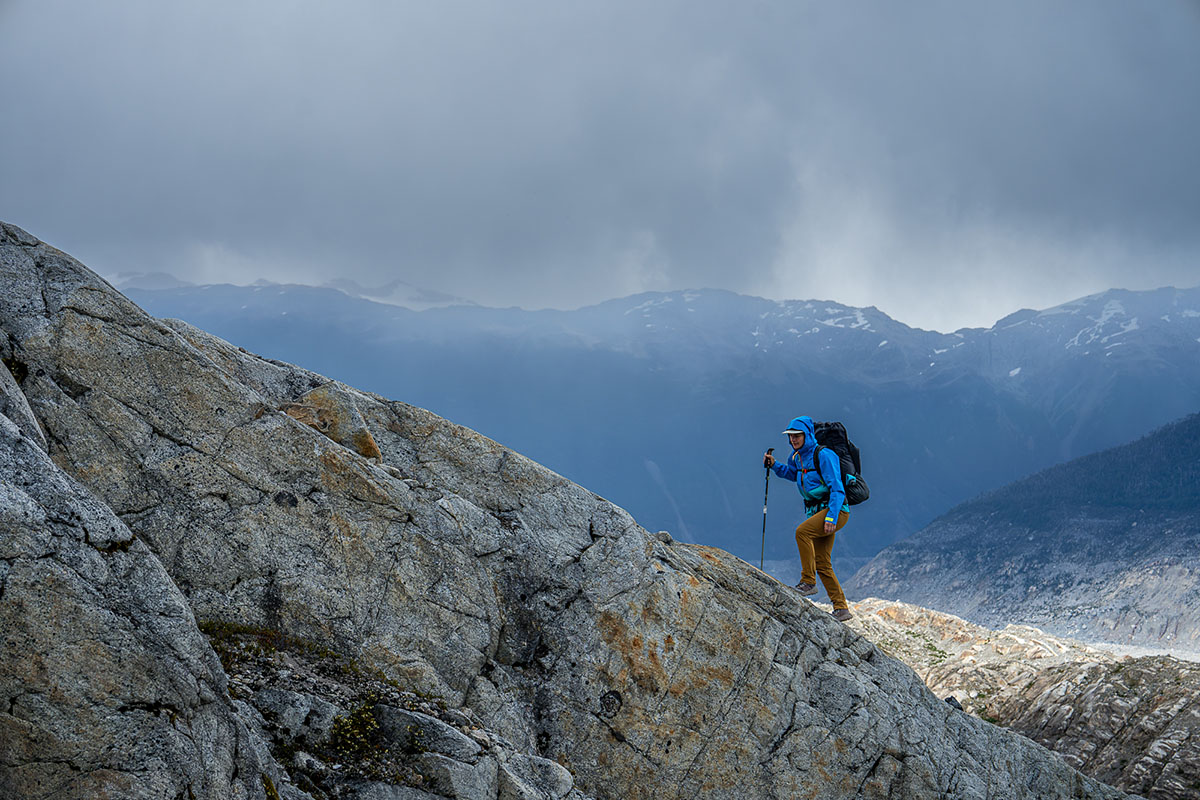
At 1 pound 5.4 ounces on my scale for my pair of women’s size 8.5 boots, the Tomir Waterproof is remarkably light for a mid-height design. For comparison, it’s very competitive with other trail runner-inspired boots including the Altra Lone Peak All-Wthr Mid 2 (1 lb. 8 oz.) and Hoka Speedgoat 5 Mid GTX (1 lb. 4.6 oz.). And the boots’ low weight is even more obvious when stacked up against more traditional (but still lightweight) hiking designs like the Salomon X Ultra 4 Mid GTX (1 lb. 10.1 oz.) and La Sportiva’s Nucleo High II GTX (1 lb. 10.8 oz.). In my opinion, this is one of the biggest selling points of the Tomir boots: They’re light and agile enough that I feel like I can run in them (a friend does in the winter) but don’t feel overly compromised compared to most options in this weight class.
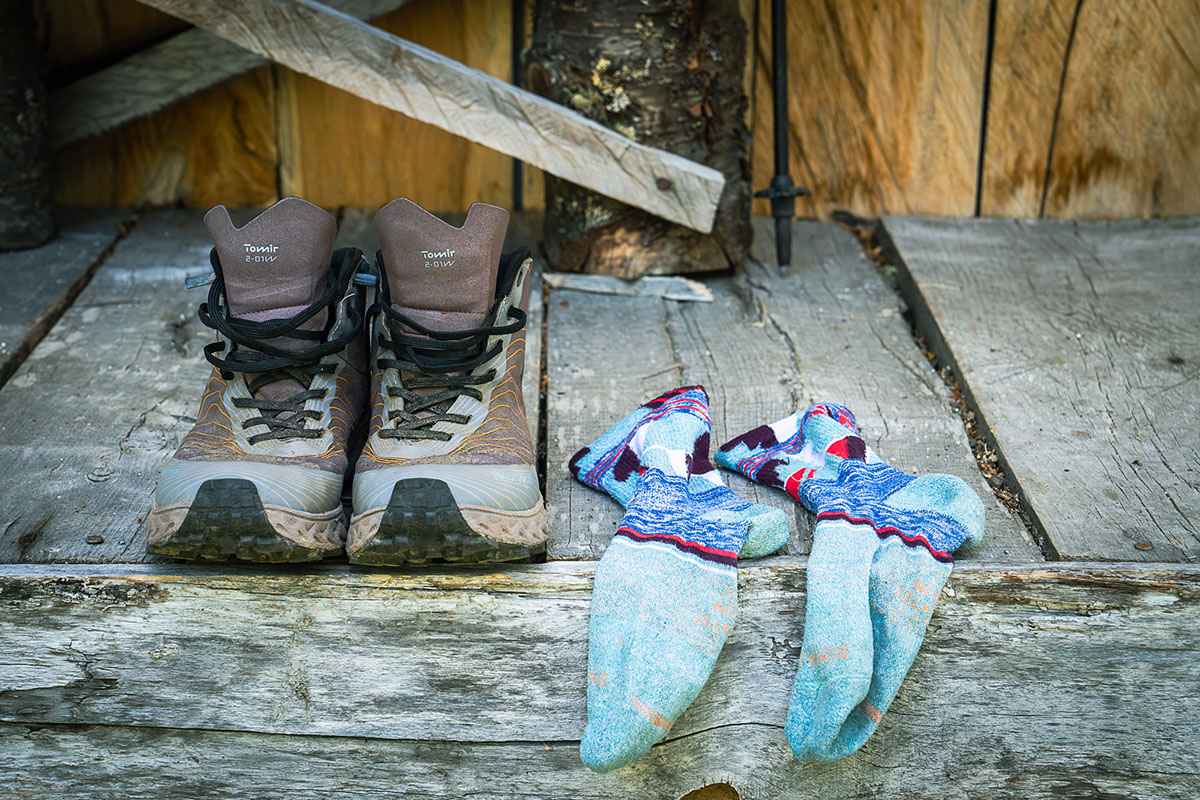
The Tomir utilizes Vibram’s premium Megagrip compound, which we’ve found to be an exceptional all-around performer. In practice, the boots gripped superbly well on everything from slick, glacier-smoothed boulders to loose dirt and wet moss. The lugs aren’t particularly aggressive, but their wide spacing helped prevent the soles from getting caked with mud. All told, I’ve experienced no slippage throughout testing and feel confident enough in the Tomir’s traction to trust it on all manner of technical terrain.
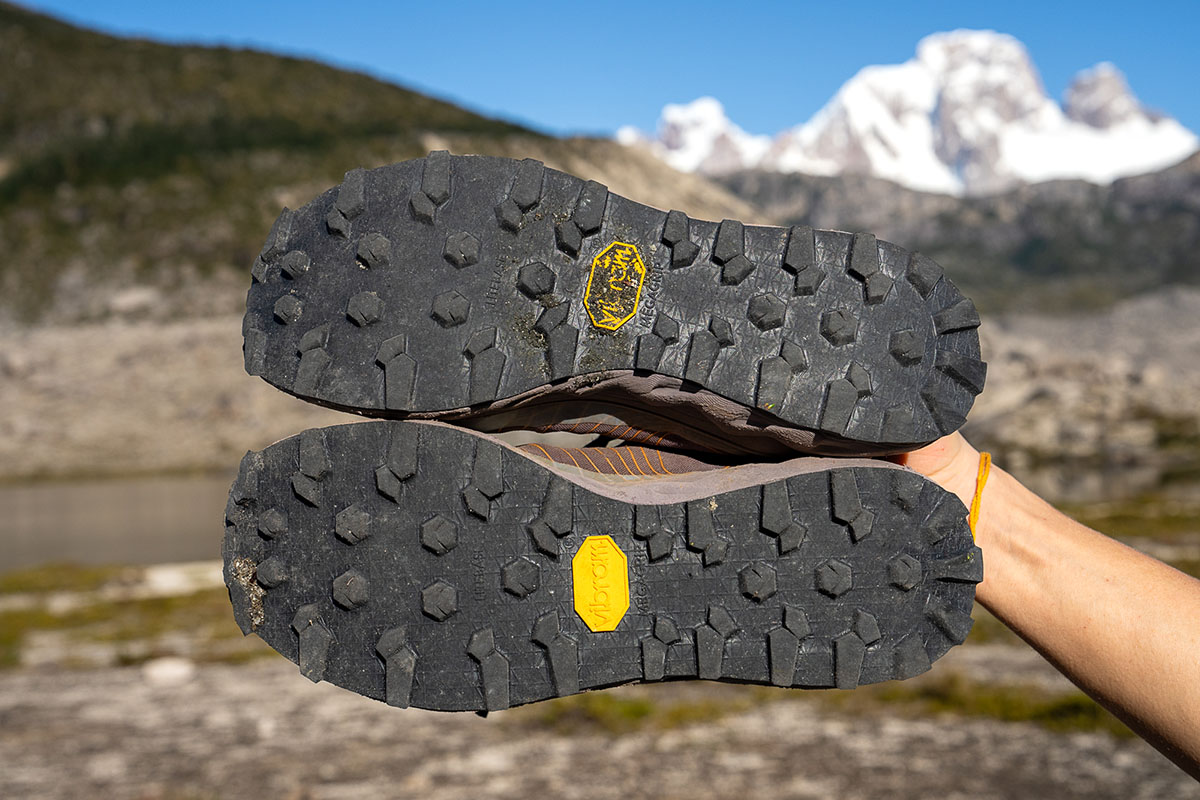
Contrary to what you’d expect with a mid-height trail runner, the Tomir Waterproof offers solid support and stability. One caveat is that you have to lace the boots pretty tight to achieve a solid feel—I initially found myself wishing for a stiffer collar for my recovering sprained ankle but soon found that cinching them tight provided enough support. I did experience a slight pressure point as a result, but it was pretty minor and worth the boost in security. Underfoot stability was also impressive, especially considering I was shuttling a 30-pound backpacking pack over loose talus, boulder fields, and a dry glacier. All in all, the Tomir exceeded my expectations and felt much more solid than expected on challenging terrain.
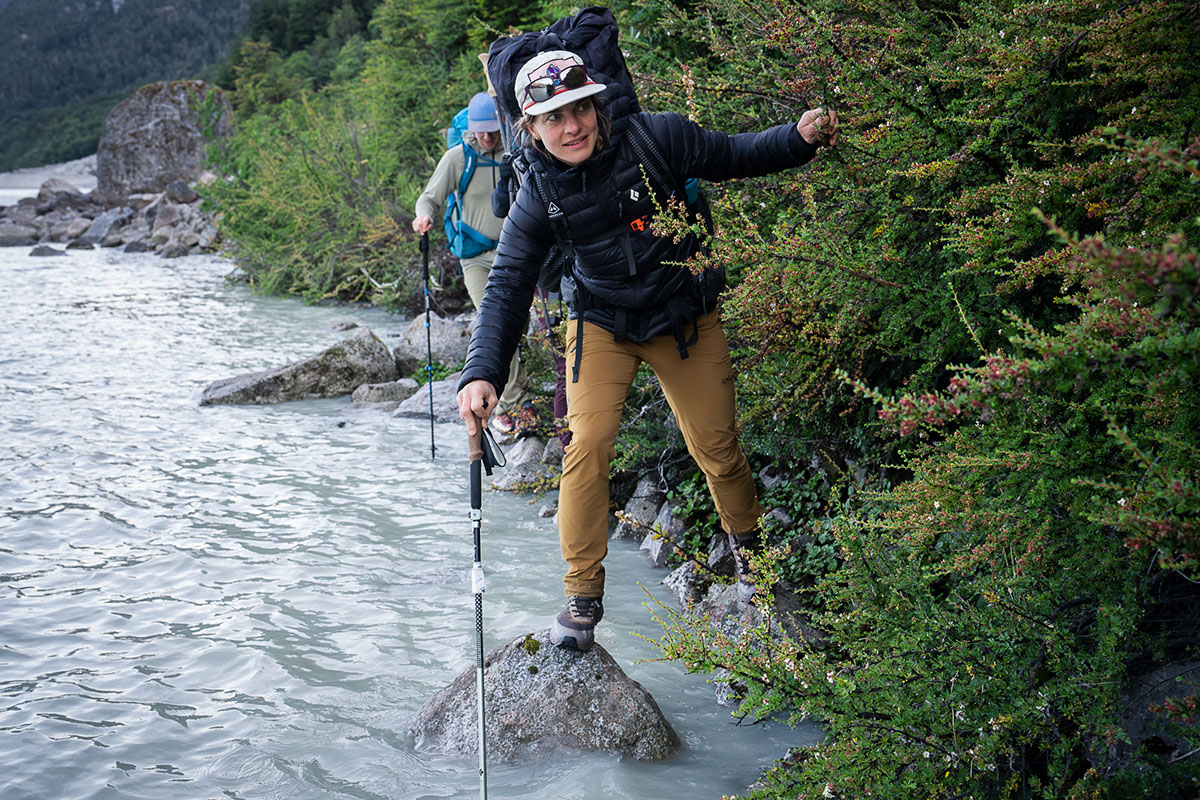
This was my first experience with Sympatex waterproofing (most boots we test use proven Gore-Tex), but I came away highly impressed. We crossed innumerable streams and swamps on our five-day trek in Patagonia, many of which resulted in the boots getting almost fully immersed, and my feet remained perfectly dry throughout. It’s important to note that protection ends around the penultimate eyelet—above this point, water can enter between the tongue and collar—but I never felt limited by the coverage and was impressed by how deep I could submerge the boots without getting wet.
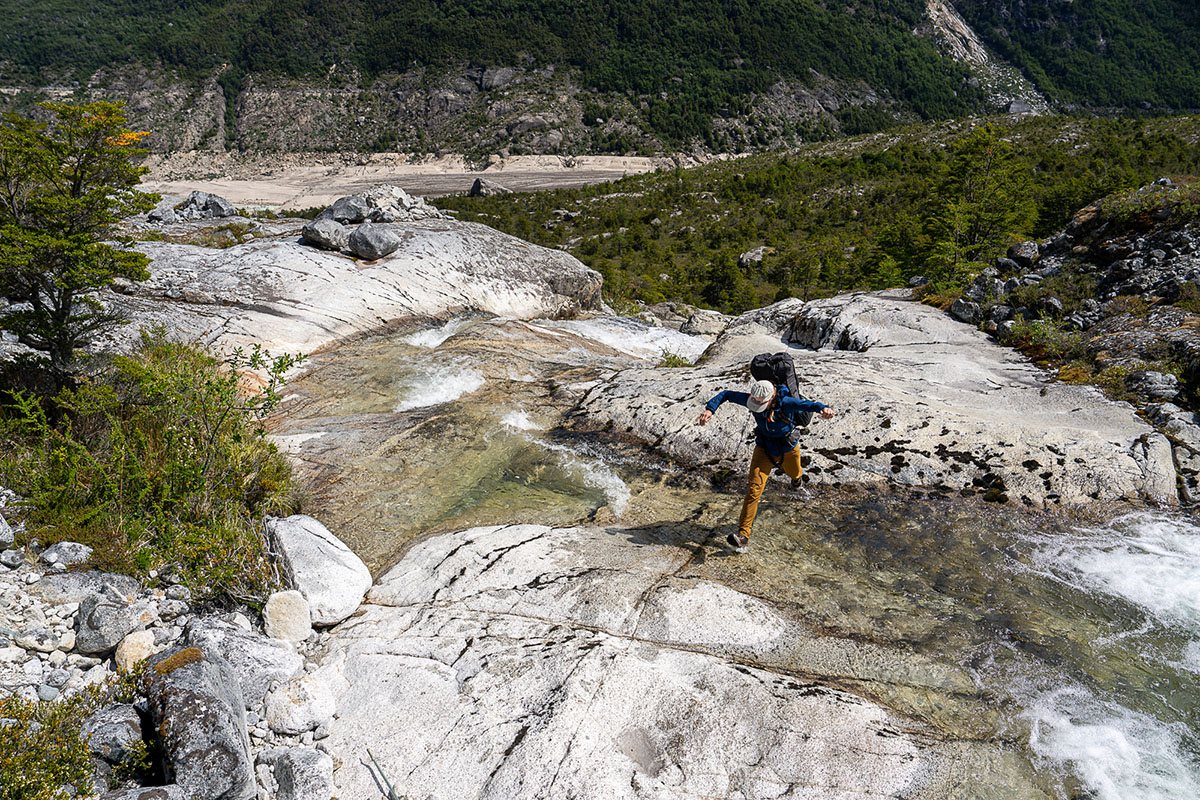
Unfortunately, the Tomir was fairly disappointing from a breathability standpoint. I don’t often (or really ever) experience sweaty feet, but it was an obvious problem in the boots. In the end, I think this was the result of a few factors: First, temperatures on our trip were undeniably warm, reaching into the upper 80s Fahrenheit with full sun exposure on many sections of the trail. Second, the Tomir’s high, close-fitting collar is great for debris prevention but doesn’t allow much air to flow out from the ankle. Finally, it’s not clear if the Sympatex membrane plays a role, but Gore-Tex is considered the gold standard among technology that’s both waterproof and breathable. Certainly, most Gore-Tex-equipped hiking boots I’ve tested have been better breathers.
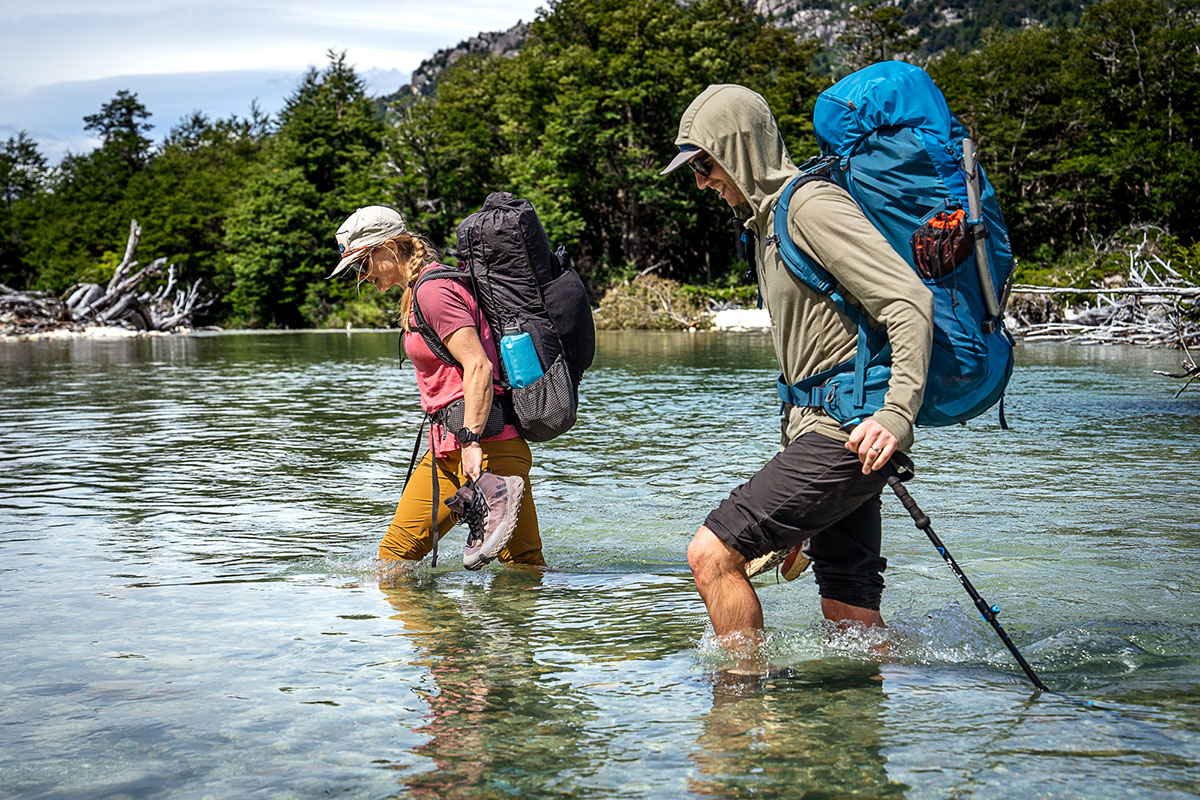
Durability is often compromised with lightweight designs, but the NNormal Tomir Waterproof has held up exceptionally well thus far. Our five-day backpacking trip was admittedly pushing the boots’ limits, with lots of off-trail travel over rough, uneven, and unforgiving terrain, but the Tomir emerged largely unscathed. One of my boots has started to delaminate at the toe (where the toe cap meets the upper), but everything else is fully intact, including the upper, interior, cushioning, outsole, and even the exposed foam midsole. I can’t speak to the Tomir’s long-term durability just yet, but it’s clear that the boots punch well above their weight compared to most lightweight hiking designs.
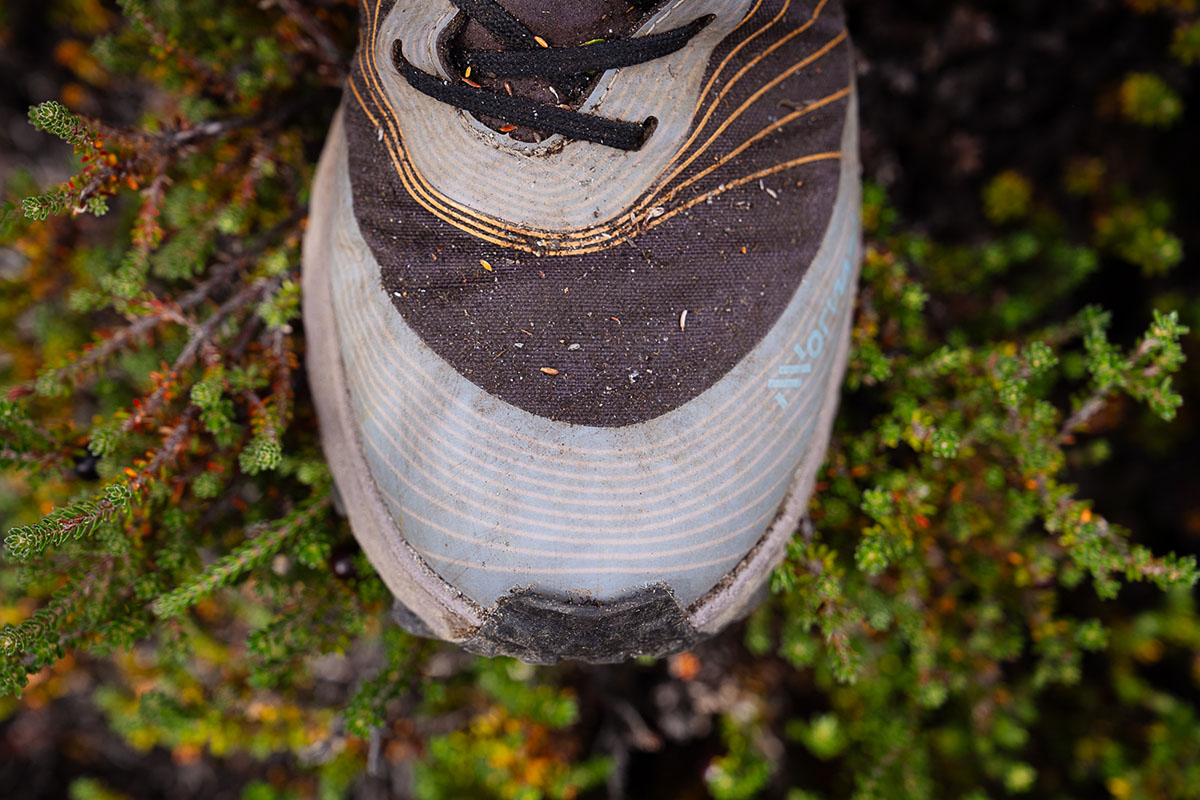
The NNormal Tomir Waterproof fit bigger than I expected. Even after I sized down from my usual women’s 9 to an 8.5, the boots were still roomier than I prefer. That said, it wasn’t egregious by any means, and I was happy to have the added width to accommodate my wide feet. The boots also provided a solid ankle lock—surprisingly good for a mid-height trail runner—although this did make them hard to get on and off. And as I touched on above, I needed to lace the boots pretty tight to achieve a secure feel. In other words, the Tomir’s fit wasn’t exactly perfect for me, but I experienced no fit-related issues (e.g., blisters or hot spots) and was able to navigate tricky terrain without feeling like my feet were swimming in the boots.
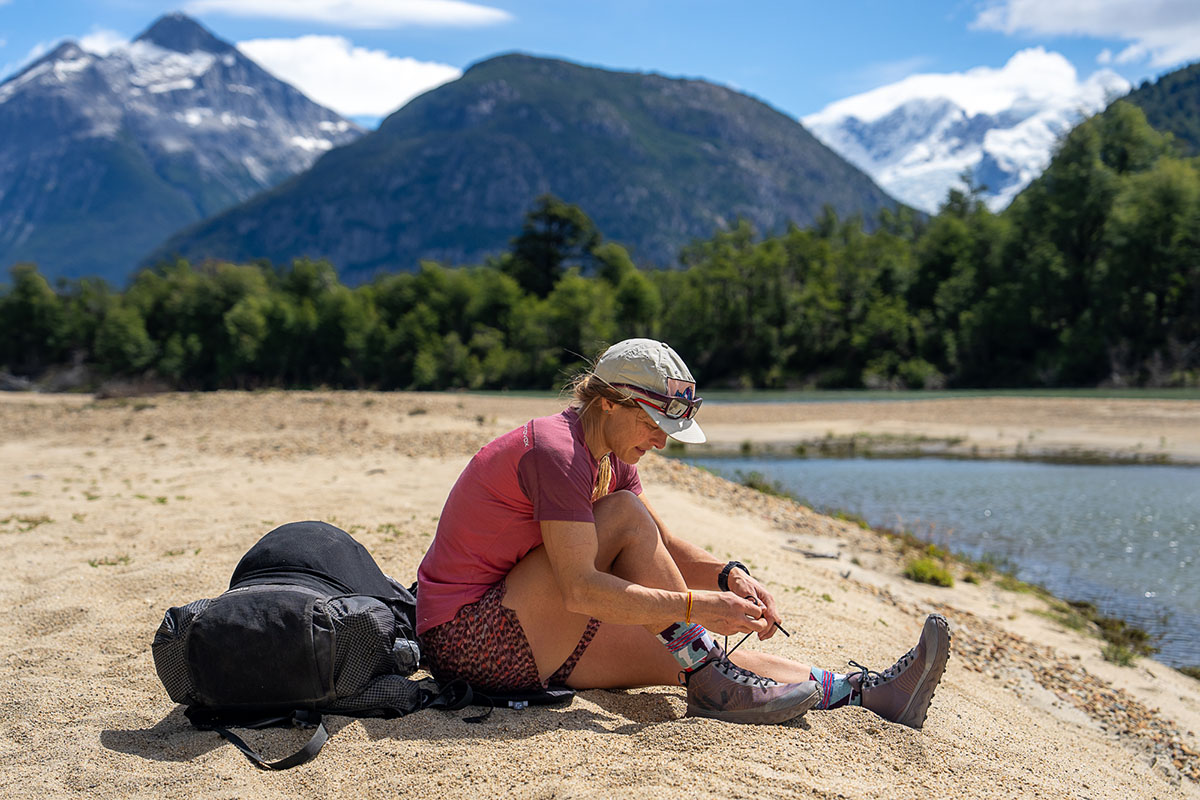
NNormal is forging a new path in outdoor footwear when it comes to sustainability. Rather than simply incorporating recycled materials into their products (which they do), the company deliberately keeps their collection small to minimize their impact and only makes upgrades when better materials are available. They also put a strong focus on circularity, offering repair and resole services to help maximize their shoes’ lifespan while reducing waste. And all of their waterproof designs use Sympatex, a recyclable membrane that’s certified as climate-neutral. Finally, NNormal is a Certified B Corporation and part of the 1% for the Planet organization, donating at least 1% of total sales each year to environmental causes. All in all, we love the approach of addressing sustainability through a durability lens and applaud NNormal for being transparent about production practices.
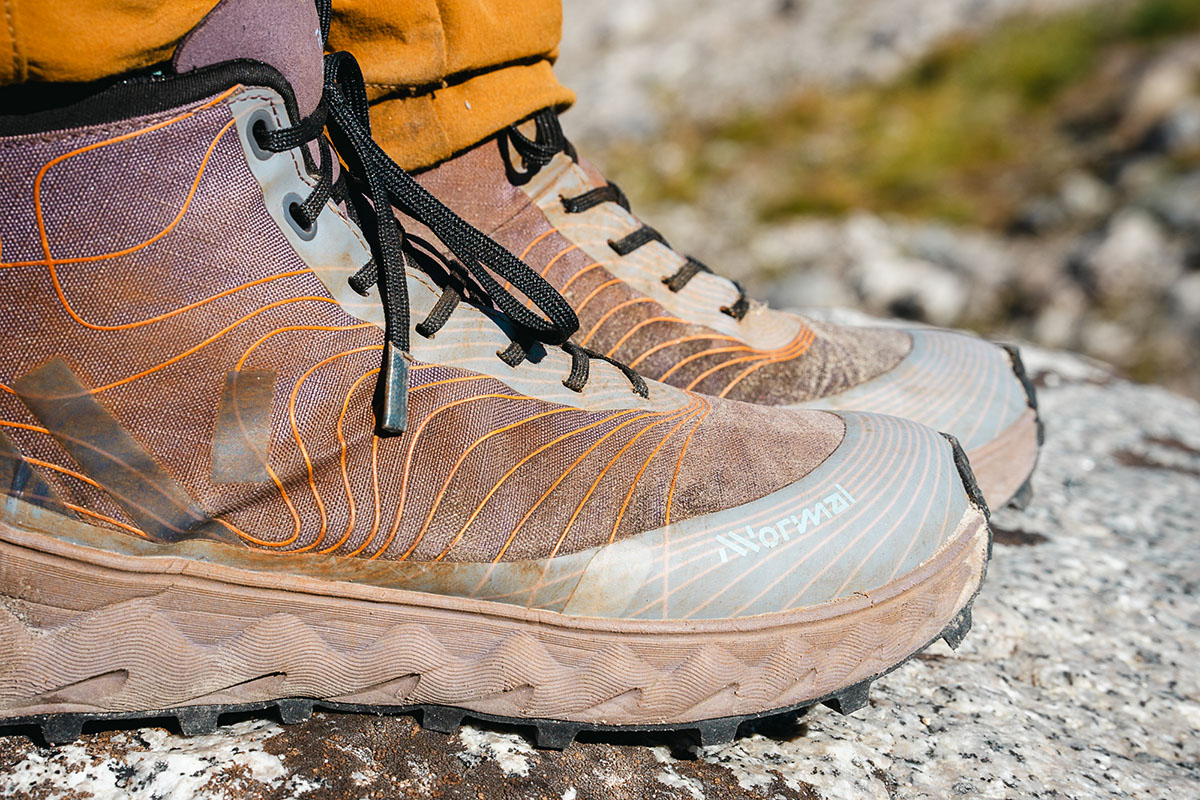
The Tomir Waterproof Boot is a unisex design that’s offered in both men’s and women’s sizes, but NNormal has a couple other options in the collection. For those who don’t need or want the ankle support of the mid-height design, there’s a low-top Tomir Waterproof available that’s largely identical to the version we tested but with a lower cut and cheaper ($175) price tag. It also almost certainly weighs less than the boot version (likely a few ounces per pair), although NNormal doesn’t provide a weight spec. Finally, the most popular option in the lineup is the standard Tomir: a non-waterproof, low-top trail runner off of which the waterproof models are based.
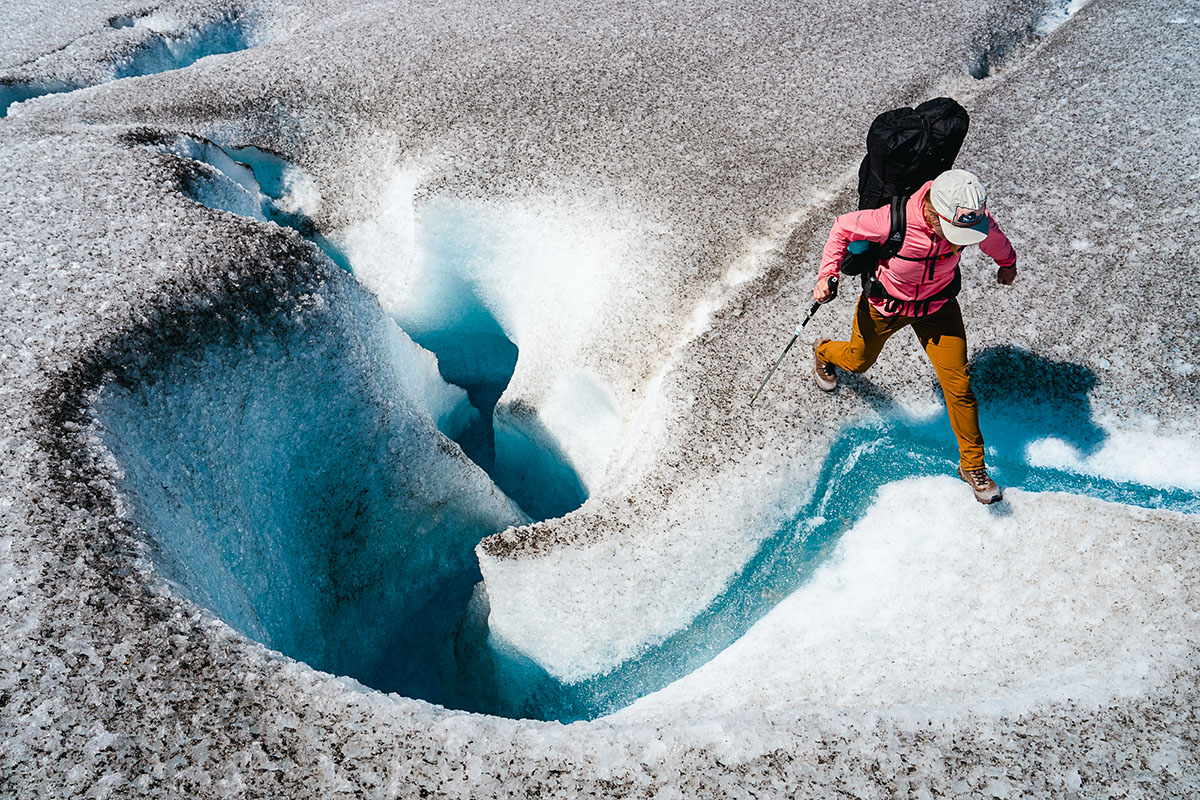
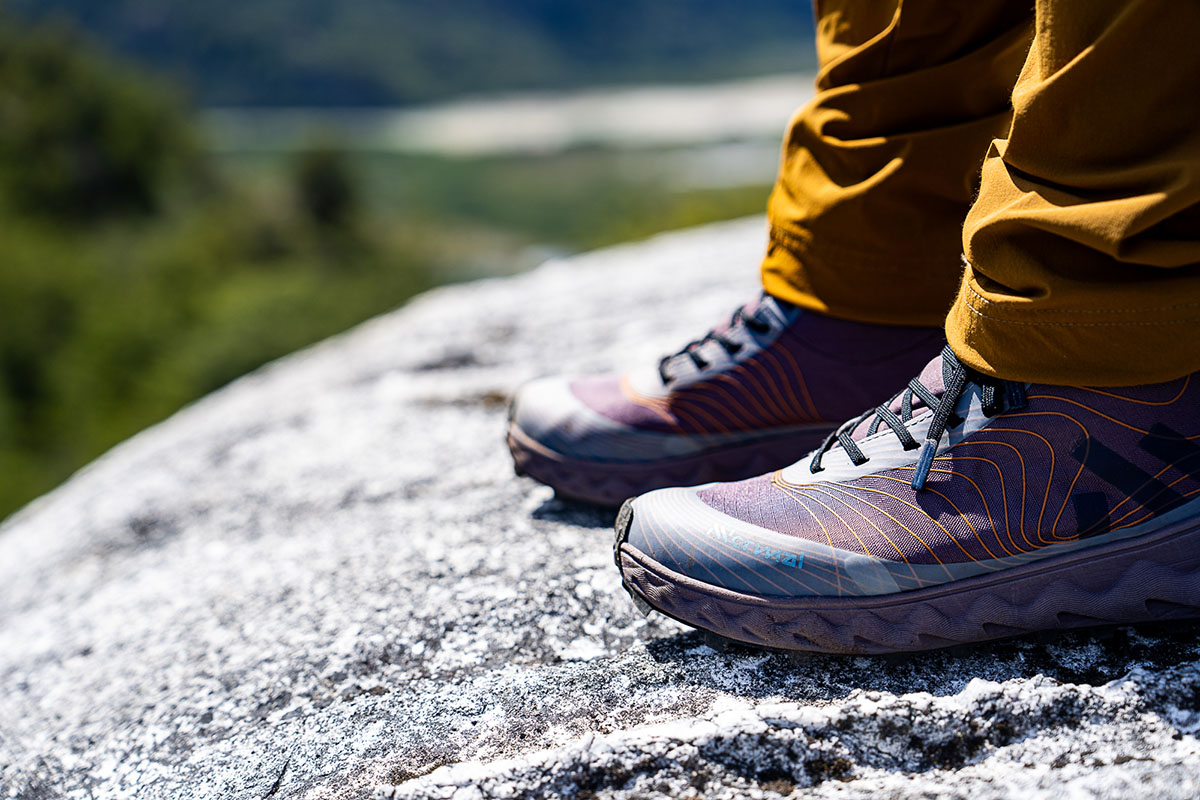
| Boot | Price | Category | Weight | Waterproof | Upper |
|---|---|---|---|---|---|
| NNormal Tomir Waterproof | $185 | Lightweight | 1 lb. 5.4 oz. | Yes (Sympatex) | Synthetic |
| Altra Lone Peak All-Wthr Mid 2 | $180 | Lightweight | 1 lb. 8 oz. | Yes | Synthetic |
| Hoka Speedgoat 5 Mid GTX | $180 | Lightweight | 1 lb. 4.6 oz. | Yes (Gore-Tex) | Synthetic |
| Salomon Cross Hike 2 Mid GTX | $190 | Lightweight | 1 lb. 9.5 oz. | Yes (Gore-Tex) | Synthetic |
| TNF Vectiv Fastpack Futurelight | $165 | Lightweight | 1 lb. 5.3 oz. | Yes (Futurelight) | Mesh |
The Tomir Waterproof Boot punches well above its weight for a mid-height trail runner, but the lightweight hiking boot market is an increasingly competitive space. Running specialist Altra offers a mid-height version of their legendary Lone Peak trail runner, which gets the edge over the Tomir in a couple areas. One is comfort: The Lone Peak’s wide toe box, generous cushioning, and zero-drop design make it easy to wear all day. We also found overall durability to be quite good despite the Altra’s similarly low (1 lb. 8 oz.) weight. That said, the Tomir offers far better stability on technical terrain and boasts a grippier and more reliable outsole. In the end, both boots have their strengths, and a final decision may come down to preferences on comfort (the Lone Peak wins out) versus performance (the Tomir gets our vote).
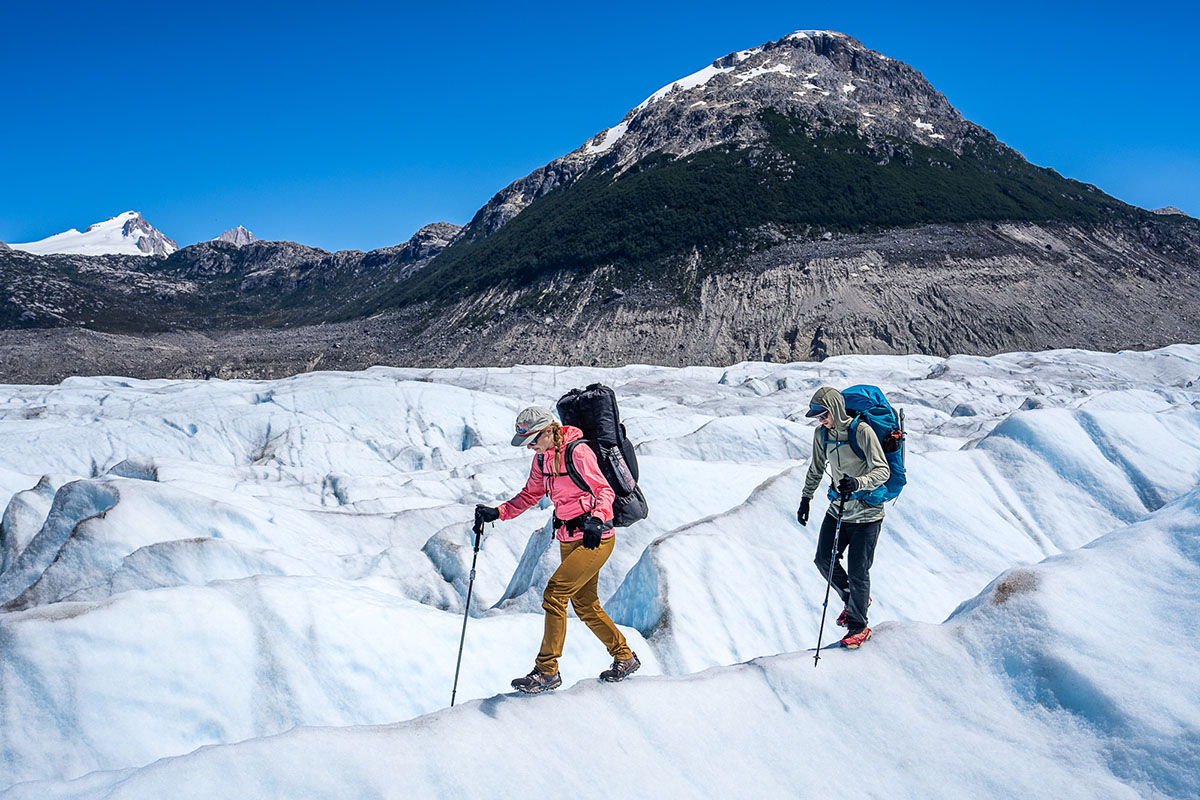
Next up is another mid-height take on a popular trail runner: Hoka’s Speedgoat 5 Mid GTX. Like the flagship design, the Speedgoat Mid boasts Hoka’s well-known springy midsole that gives it excellent all-day comfort. Like the Tomir, the Hoka uses a tacky Vibram Megagrip outsole, but with deeper lugs for added bite on soft ground. It’s also $5 cheaper and around an ounce lighter than the NNormal, although the thick and soft midsole results in a noticeable drop in stability and strikes us as more susceptible to packing out over time. If you stick to maintained trails, the Speedgoat is a perfectly viable option and the undisputed winner in comfort. For fast-and-light objectives that involve technical terrain, we’d go with the more supportive Tomir.
Another capable and modern lightweight hiker to consider is Salomon’s Cross Hike 2 Mid GTX. While a little heavier than the Tomir at 1 pound 9.5 ounces, the Cross Hike has a similarly light and speedy feel, along with noticeably thicker cushioning throughout. The Salomon also has a more aggressive outsole design, with deep, multi-directional lugs that provide great all-around traction. The biggest drawback is support, which is largely due to the Cross Hike’s lack of eyelet at the top of the collar. This causes the boot to gape open and allow trail debris to enter from the top. Stability also falls short of the Tomir, and the Quicklace system—while quick and easy—isn’t as customizable or reliable as traditional laces (for more, see our in-depth review). In the end, if the lack of cushioning isn’t a dealbreaker, we think the NNormal is the more capable all-around design.
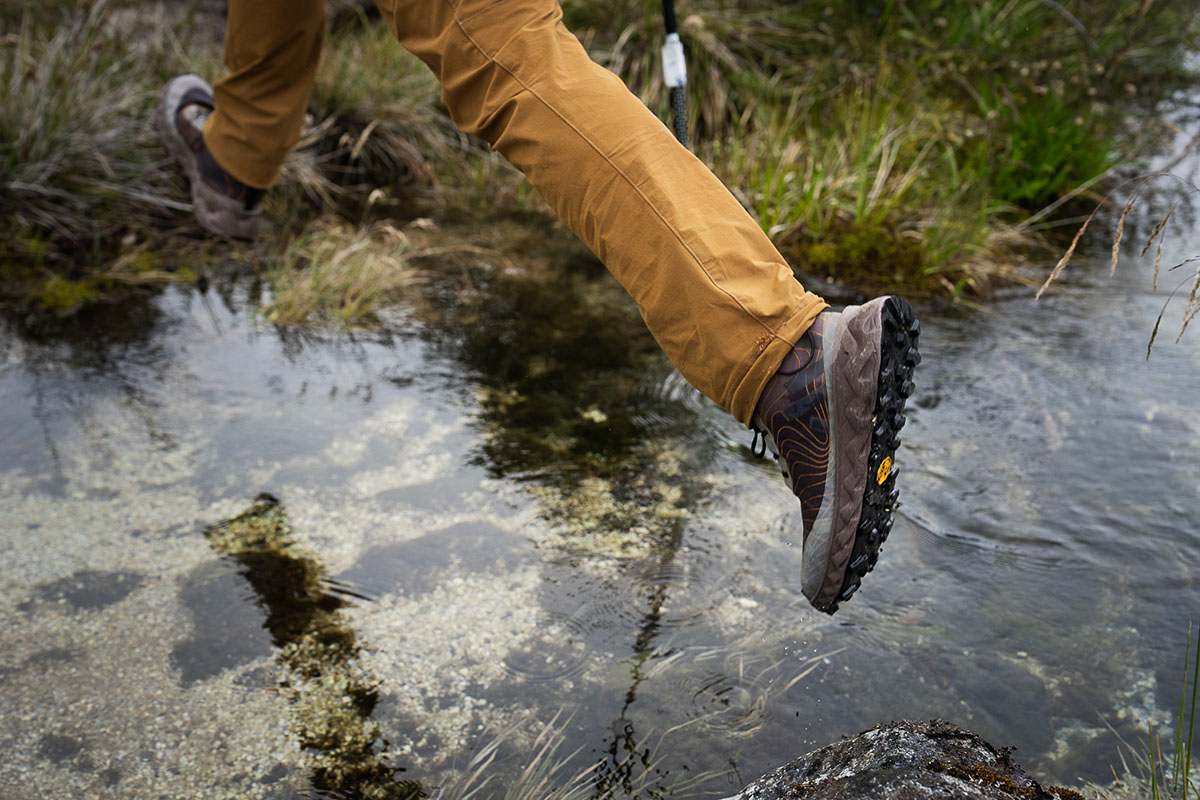
Last but not least, The North Face’s Vectiv Fastpack Mid Futurelight takes inspiration from their Vectiv trail running collection and is one quick-moving boot. For $20 less than the Tomir, the Vectiv Fastpack checks in at an almost identical weight, offers comparable ankle support and security at the collar, and stacks up similarly in terms of traction and waterproofing. That said, I was happy to have the NNormal boots when covering Patagonia’s rugged cross-country terrain—the Vectiv Fastpack’s thick and rockered shape gave it a slightly tippy feel when crossing talus and boulder-hopping. We weren’t impressed with durability, either, including an abrasion-prone (but more breathable) mesh upper and soft foam that packs out over time. If you plan to do any off-trail hiking, the Tomir will almost certainly feel more solid and last longer.